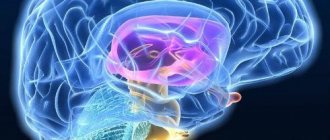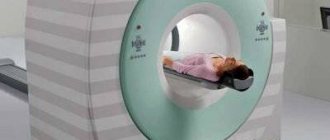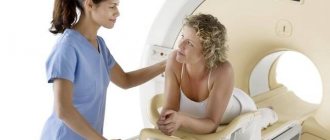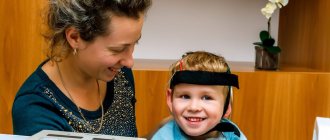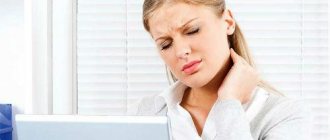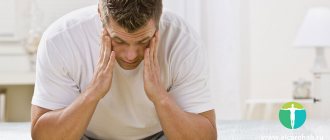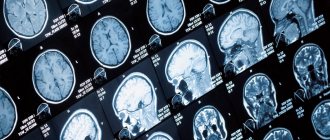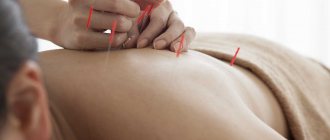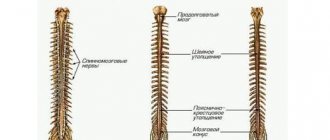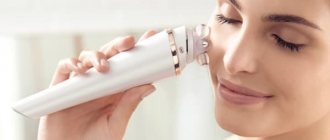Author: Elena Degtyar, candidate of biological sciences, head of the scientific department of the School of the Ideal Body #SEKTA.
Constant hardening leads to an increase in the production of norepinephrine, as well as beta-endorphin, a neurotransmitter responsible for overall well-being.
Regular exposure to cold water improves immunity and is recommended for a long list of diseases. However, although these effects have been scientifically proven, the mechanisms by which hydrotherapy improves these conditions are unknown.
How the hardening procedure is viewed in scientific circles is in our new article.
In a textbook on physical therapy and sports medicine, Professor Vitaly Epifanov defines hardening as “regular and dosed exposure to various natural factors unusual for the human body, such as water, air, atmospheric pressure, low and high temperatures.” It is carried out with the aim of increasing the functional reserves of the body and its resistance to environmental changes, be it weather and climatic conditions, stress or illness.
| Regular hardening leads to adaptation of all body systems and strengthens the endocrine and immune systems. |
Unfortunately, it is quite difficult to find a suitable translation of the term “hardening” in the scientific literature. However, if you narrow your search to the use of hydrotherapy (water therapy), in particular, to contrast showers or dousing with cold water, there are many scientific studies that are ready to confirm the health benefits of these procedures.
In 2014, the North American Journal of Medicine published a review of the scientifically proven positive effects of hydrotherapy. In the conclusion of the review, the authors of the article wrote: “Hydrotherapy can be used to strengthen the immune system and prevent pain, chronic diseases of the cardiovascular and pulmonary systems, leads to improvement in asthma, Parkinson’s disease, arthritis, chronic fatigue, obesity, anorexia, high blood pressure and overheating. Different effects occur depending on the water temperature .
However, although these effects have been scientifically proven, the mechanisms by which hydrotherapy improves these conditions are unknown . This is a major drawback of hydrotherapy methods and requires additional biochemical and physiological studies to understand these processes.”
| Cold water douches lead to physiological and biochemical changes in the body, such as increased heart rate (pulse), blood pressure and metabolism, but the molecular processes that contribute to this are unknown. |
How does the Charcot shower procedure work?
The effectiveness of the method lies in the effect on the body of jets of water, which are supplied under high pressure (from 2 to 4 atmospheres) and have a contrasting temperature (20-40 oC). The procedure is carried out in a special shower room as follows:
- The patient should stand at a distance of 3-5 m from the shower chair, behind which is the person conducting the session. If the shower is painful, you need to move away. To enhance the impact, you can stand closer.
- Water is directed onto the patient's body, first with a fan, then with a compact jet under pressure.
- Next, parts of the body (arms, back, sides, legs) are treated one by one with jets of hot, then cold water.
- The body must gradually get used to the load, so in the first sessions only one jet is used. In this case, the water temperature should be 36-40 oC. In subsequent sessions it is gradually reduced, bringing it to 20 °C by the end of the course. On the contrary, the jet pressure increases.
- If a Scottish shower is performed, during 1 procedure the water temperature is changed several times: first, the patient is exposed to hot (up to 42 °C) water for 30-40 seconds, and then switched to cold (15-20 °C) for 14-20 seconds .
- The shower is directed from head to toe, first to the front surface of the body, then to the side and back surfaces. At the same time, avoid getting water on the head, the area of the spinal column, the genitals, and mammary glands.
- Each limb is affected in turn (along the course of large vessels), after which the water is directed to the stomach (clockwise).
At the end of the procedure, the patient is given a fan contrast shower.
The duration of the first sessions of Charcot's shower is 1-2 minutes, then by the end of the course it is gradually increased to 5-7 minutes. It is recommended to carry out the procedure once every 2-3 days. You should not come to Charcot's shower sessions every day, since in this case the load on the body will be excessive. Depending on the indications and tolerability, the course of treatment may consist of several sessions - from 10 to 15. The cycle of procedures can be repeated after 6 months.
The procedure must be carried out by a competent specialist who can objectively assess the condition of the patient’s body and correctly change the jet pressure, adjust the water temperature, and, if necessary, provide medical assistance. Otherwise, the session may lead to negative consequences.
Do you need any preparation for the procedures?
A Charcot shower session does not require any special preparation. You need to take with you:
- swimsuit (or swimming trunks);
- shower cap;
- slates;
- towel.
After the procedure, no special skin care is needed. If muscle pain occurs, use painkillers and, if necessary, buy a product to speed up the resorption of bruises.
The effect of a contrast shower on health
Research shows that regular dousing with cold water reduces the incidence of infectious diseases and improves the immune system.
In 2015, Dutch scientists studied the effects of contrast showers on people's health. The study involved more than 3,000 people aged 18 to 65 years, asking them to finish their water treatments with a cold shower for 30, 60 and 90 seconds every day for a month.
The results of the study showed that among the participants in the experiment who adhered to the regimen, the number of sick days taken decreased by 30%. Participants who led an active lifestyle and performed daily physical activity also took fewer sick days, and in the group of physically active people using contrast showers, their number decreased by 50%.
The benefits and harms of the procedure
A cycle of Charcot's shower sessions has a general strengthening, tonic effect on the body, and also has many other positive effects:
- Improves the functioning of blood vessels, the lymphatic system, and increases the number of capillaries. As a result of increased blood flow, internal organs are better supplied with oxygen and nutrients.
- Depending on the temperature of the water, the tone of the striated muscles and blood vessels increases or decreases.
- The procedure stimulates the functions of the pituitary gland and hypothalamus, in turn this helps to improve the functioning of the endocrine and nervous systems.
- The body begins a self-healing process. After several sessions, a person feels cheerful and energetic.
- The manifestations of symptoms of inflammation and pain are reduced.
- The immune system is activated.
- Metabolism accelerates, which promotes weight loss and improves the processes of excretion of cellular metabolic products. We can say that Charcot's shower has a powerful fat-burning effect.
A course of procedures makes the skin fresh, tightened, eliminating signs of cellulite.
During the session, the lymphatic system is activated. As a result, cellular nutrition improves and the processes of removing waste and toxins are stimulated. Regular procedures can help resolve benign tumors.
Is there any harm?
The impact of water jets is often painful and leaves bruises on the body. As a rule, they appear after the first procedures, then disappear after about 2 weeks. Not all patients with increased pain sensitivity can withstand the full course. In this case, it is better to use other hydrotherapy methods.
According to patient reviews, subsequent procedures are less painful than the first.
If you ignore information about contraindications, chronic diseases may worsen. It is very important that the sessions are carried out by a competent specialist, otherwise Charcot’s shower can be harmful to health.
Effect of cold water on recovery
A huge amount of research has been devoted to studying the effect of cold water on recovery after exercise. The results showed that such procedures effectively relieve fatigue immediately after training and reduce the manifestation of muscle pain. One of the proposed mechanisms leading to this effect is a reduction in blood flow in the muscle and a local decrease in temperature in the tissues, which leads to a decrease in inflammation in them.
Procedures in which athletes are immersed in water at a temperature of
10-20°C for 5-10 minutes . Regular swimming in cold water in winter with increasing duration relieves stress, fatigue, improves mood and memory. Those suffering from rheumatism, fibromyalgia and asthma experience an improvement in overall well-being and an increased pain threshold. Local application of cold reduces tissue metabolism, relieves swelling, reduces muscle spasms and may have an anesthetic effect.
Indications
Charcot's shower is prescribed for the following indications:
- disorders of the nervous system;
- vegetative-vascular dystonia;
- diseases of the digestive system;
- joint pathologies;
- osteochondrosis and other diseases of the spine;
- minor disturbances in the functioning of the cardiovascular system;
- chronic fatigue syndrome;
- constant stress;
- metabolic disorders;
- weakened immunity;
- diseases of an allergic nature;
- obesity;
- cellulite.
The procedures will also be useful during the rehabilitation period.
Muscle relaxation
Relaxation exercises provide a double effect. Firstly, they reduce the level of general tension and help reduce the manifestations of panic disorder. Secondly, after a few weeks the body firmly remembers the feeling of peace and tranquility that appears during muscle relaxation. After this, the exercise can be used when the first symptoms of a panic attack occur in order to prevent an attack.
There are several muscle relaxation techniques. Their detailed descriptions can be easily found on the Internet. Whatever technique you choose, remember that there are two rules.
The exercise should be performed in a calm environment, without distractions and without rushing anywhere. And in this case, a “one-time action” is not enough. Only systematic exercise can provide noticeable results.
Contraindications
Charcot's shower procedures have contraindications:
- skin diseases;
- varicose veins;
- weak blood vessels;
- severe pathologies of the cardiovascular system;
- urolithiasis disease;
- malignant neoplasms;
- pregnancy;
- menstruation;
- increase in body temperature.
Sessions are prescribed with caution in the following cases (so-called conditional contraindications):
- protrusion;
- women's diseases (gynecology);
- hypertension;
- skin diseases;
- ulcers in the gastrointestinal tract;
- blood diseases.
If a caesarean section was performed, at least 6 months should pass after this. You can undergo the procedure if there are no postoperative complications. The seam should be free of inflammation. In any case, all patients should first consult a doctor. Then it is recommended to undergo 1 procedure; if everything is in order, you can continue the course.
Lack of air with VSD
One of the common manifestations of VSD is a feeling of lack of air or hyperventilation of the lungs. At the same time, you may feel a “lump in your throat,” increased breathing, and you experience a feeling of lack of oxygen. It is actually a condition in which there is not enough carbon dioxide in the blood. The body begins to give a command to slow down your breathing, and if you are prone to anxiety, you instinctively begin to breathe more often.
Along with the lack of air, accompanying symptoms may appear - rapid heartbeat, ringing in the ears, tingling in the limbs.
Attacks are especially active during stressful conditions.
Is it possible to carry out procedures at home?
Currently, plumbing stores sell many accessories for hydromassage at home. Using a special nozzle designed like a Charcot shower, you can conduct a session in your own bathroom. However, it is impossible to achieve the same effect, since the jet power will be less.
And the area of the bathroom will not allow you to maintain the required distance between the body and the taps. The water pressure will also not meet the standards. However, such a procedure at home will still be useful. It will have an excellent tonic effect, especially in the morning, and will give a boost of energy.
You can purchase a nozzle that provides water pressure up to 4 atmospheres. This indicator will be enough to perform a body massage. The hydromassage nozzle is fixed in place of a regular shower.
An alternative option is a contrast shower.
What mechanisms are hidden behind a contrast shower?
Although scientists have demonstrated that contrast procedures reduce pain, swelling, muscle congestion and even improve overall well-being, how this effect is achieved is not fully understood.
There is a hypothesis that in the acute phase of dousing, when we are trembling, the concentration of cortisol and norepinephrine increases. In this case, the greatest physiological reaction to exposure to cold water is observed in the first 30 seconds. This means that it is most likely initiated by neurogenic pathways rather than by circulating hormones. But activation of the sympathetic nervous system fully explains the long-term antidepressant effects.
Researchers also claim that the alternating contraction and relaxation of blood vessels creates a pump effect and accelerates blood flow. They are objected to that the cooling during a contrast shower is very superficial. Intramuscular temperature does not change enough to create this “pump.” Other authors have suggested that swelling is relieved by flushing out excess fluid through the lymphatic system. But the movement of lymph requires muscle contraction and does not depend on blood circulation.
Misunderstandings between scientists do not allow us to explain the effects of contrast showers only by physiological mechanisms. Perhaps psychological factors are involved or the placebo effect is triggered. The issue requires further study.
Which is better: Charcot shower or underwater hydromassage
An equally effective water procedure is underwater hydromassage. The patient is placed in a special bathroom 2 m long and 1 m wide, which is equipped with a pump and a flexible hose with a nozzle. The water temperature is 30-37 oC.
You can add sea salt, a decoction of medicinal herbs, and aroma oil to the bath.
The patient should first simply lie in the water for 5-7 minutes. Then the specialist begins the massage using a flexible hose through which water comes out under a pressure of 1-4 atmospheres. The massage therapist uses a jet of water to target all problem areas of the patient.
Underwater hydromassage is effective for excess weight, cellulite, and swelling.
The duration of the procedure is 15-35 minutes, the frequency is every day or every other day. The recommended course is 10-20 baths, after six months it can be repeated.
Compared to Charcot's shower, underwater hydromassage has a more gentle effect on the body and has fewer contraindications. These include:
- urolithiasis disease;
- vein diseases;
- severe hypertension;
- exacerbation of cardiovascular diseases;
- cerebrovascular accidents;
- pustular skin diseases;
- malignant neoplasms;
- pregnancy.
The patient does not experience any painful sensations during the sessions, but the cost of the course will be higher. Charcot's shower is more affordable and more effective from a cosmetological point of view, although it gives the patient discomfort during the session. For maximum results, you can combine both methods.
What could go wrong?
We react to cold water as to stress: the heart begins to beat very quickly, the pulse and breathing become more frequent, and the pressure rises. Healthy people effectively cope with short episodes of stress, but for “heart” and “lung patients” such experiments can result in serious problems.
The remaining warnings are within the bounds of common sense: do not get scalded and do not get hypothermic. Also, do not replace a contrast shower with taking medications and other medical procedures.
"Universal" techniques
There are simple rules that it would be useful to remind all those who suffer from panic disorder:
- Get enough sleep. Lack of sleep, both single and chronic, reduces the stability of the nervous system and increases the likelihood of symptoms of a panic attack.
- Exercise regularly. Swimming, visiting a fitness club and even the most ordinary exercise are an excellent way to improve not only your physical but also your mental state. In addition, this is a good way to expand the “borders” of your life, which for people suffering from panic disorder often becomes poor in pleasant experiences. Just without fanaticism! And, when choosing the type and intensity of physical activity, do not forget to consult your doctor.
- Try not to use stimulants: strong tea and coffee, nicotine and especially alcohol. Immediately after drinking alcohol, the manifestations of panic disorder decrease. This is where the danger lies. Drinking one or two drinks before an alarming situation quickly becomes a habit, and then it’s not far from alcoholism. In addition, a hangover provokes panic attacks. Well, it’s not worth talking about what panic is against the background of a hangover.
- Eat regularly. When a person is hungry, their blood sugar levels drop, which can contribute to the symptoms of a panic attack.
And while taking care of your body, don’t forget about your soul. The origins of panic disorder lie in unresolved psychological problems, therefore, in order to completely eliminate the symptoms of panic attacks, it is necessary to work with a psychotherapist.
Autotraining
Relaxation practices exist in a variety of cultures around the world and have been used by official medicine for quite some time. The abundance of options allows you to choose a method to suit your taste, corresponding to your worldview and needs. What is important, again, is regularity, full involvement in the process and strict adherence to instructions. Such exercises, in addition to alleviating symptoms, allow you to work out muscle tension and determine their psychological causes, the clarification of which can help get rid of panic disorder.
An integral part of treatment
If you yourself are not able to improve your psycho-emotional background, seek help from a specialist. Psychotherapy is an integral part of the treatment of panic attacks. It is she who will allow you to get to the very essence, to understand why such shocks are happening to you. Along with “diagnosis” of the problem, it allows you to find ways to solve it.
The main method of psychotherapeutic treatment of panic disorder is cognitive behavioral therapy . It relieves anxiety and allows you to change the patient’s perception of his problem. The following techniques are used:
- self-observation diary;
- immersion in an alarming situation;
- meditation, muscle relaxation;
- proper breathing techniques.
The course of therapy is 10–20 sessions.
Other psychotherapeutic areas are also used in the treatment of panic attacks :
- Gestalt therapy;
- neurolinguistic programming;
- body-oriented therapy.
Hypnotherapy is in wide demand . To characterize it in a rough form, the doctor puts the patient into a trance and in this state instills in him certain instructions for getting rid of panic attacks, that is, he works with the person’s subconscious.
There is a softer form of hypnotherapy -
Ericksonian hypnosis .
In this case, the person is also in a state of trance, but retains the ability to communicate with a psychotherapist. The doctor does not give specific instructions to the patient, but provides him with the opportunity to understand his internal conflicts. Family therapy can also have positive results. It forces us to consider a person’s problem not only as his personal one, but also as a result of a lack of support from loved ones. The method teaches the patient’s relatives how to help him fight the disease and provide support.
Do not neglect psychotherapeutic methods. They radically change the patient’s thinking, attitude towards the situation, and lead him to self-knowledge. Such steps become key in getting rid of unreasonable anxiety.
Film actress Emma Stone first experienced a terrifying panic attack when she was 10 years old. She was visiting her friend. Just sitting down on the sofa, she was suddenly overcome with horror, it seemed to her that the house was on fire. She couldn’t get up from the sofa, sobbing, she called her mother to pick her up.
Since then, panic attacks have become a part of her life. She constantly forced her mother to tell her that everything was fine, nothing had happened, there was no danger. Persistent and long-term psychotherapy helped her get rid of these crises.
